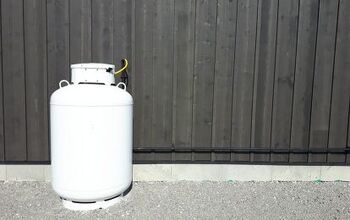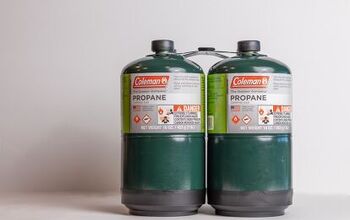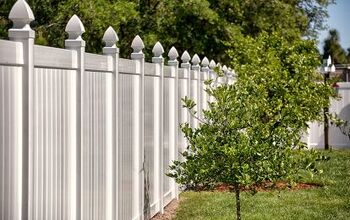How Long Do Water Hammer Arrestors Last? (Find Out Now!)

If you have ever heard a loud thud when turning on your washing machine, you have experienced water hammer. This noise results from a lack of air in the pipes, so there’s no cushion to absorb the water shock. If you notice this jolting noise when turning on your appliances, you need a water hammer arrestor.
You rarely need to replace chamber-style water hammer arrestors. However, piston-type water hammers have mechanical devices, so they can fail if there is sediment build-up.
What Is a Water Hammer Arrestor?
A water hammer arrestor absorbs the shock of water flowing into the piping system and suddenly stopping. This phenomenon happens due to fast, closing shut-off valves, dishwashers, and washing machines.
Noisy washing machines and other appliances are annoying but can also mean damage from a burst hose or plumbing line. A water hammer arrestor can protect against the damaging effects of water hammers.
How Long Do Water Hammer Arrestors Last?
Stainless steel or chamber-style water hammer arrestors are guaranteed for the life of the plumbing. Therefore, you would likely never need to replace them. However, piston-type water hammer arrestors have moving parts, so you may need to replace them more often due to sediment build-up.
Types of Residential Water Hammer Arrestors
There are three types of residential water hammer arrestors.
Single-Chamber Water Hammer Arrestor
You mainly use a single-chamber water hammer arrestor on ½-inch pipe systems. However, you can install it on any section of pipe where it’s needed. The sealed air chamber absorbs the energy from water pipe pressure surges to keep the pipe dry.
Single-chamber water hammer arrestors consist of copper and can handle water temperatures up to 180 degrees Fahrenheit. In addition to ½-inch pipes, they are also available for ¾-inch and 1-inch water pipes. You can install them at any angle of the main pipe.
You can purchase single-chamber water hammer arrestors at most home improvement stores for about $15.
Mini-End-Stop Water Hammer Arrestor
Mini-end-stop water hammer arrestors come with a 90-degree angle fitting and threaded end. This water hammer arrestor attaches to the hose connection of a washing machine or dishwasher. You can use it on ½-inch, ¾-inch, or 1-inch water pipes.
These water hammers work best when installed at 90 degrees to the main pipe, but they work at any angle. Similar to single-chamber arrestors, mini-end arrestors do not need much space behind any interior wall.
Pricing on mini end stop water hammer arrestors will vary depending on the diameter of the fitting. However, ⅜-inch and ⅝-inch fittings typically cost about $15, while other sizes can range from $30 to $40.
Hose-Bib Style Water Hammer Arrestor
The hose-bib style water hammer arrestor has a 6-inch wide PVC housing with an internal diaphragm. The purpose of the diaphragm is to disperse the shock of the water flowing through a quick-closing valve. These arrestors work best when attached directly to the water intake on the washing machine because they can handle higher volumes.
Because of their larger diameter, you should not install hose-bib water hammers inside of the wall. These water hammer arrestors can cost up to $125 plus installation fees. You can purchase them at any hardware store.
Types of Water Hammer Arrestor Fittings
There are threaded, compression, and push-fit water hammer arrestor fittings.
Threaded Fittings
For threaded water hammer arrestors, you can thread the device onto each valve or inlet. Turn the female fitting clockwise by hand, then tighten with pliers.
Compression Fittings
If your water hammer arrestor has a compression fitting, slide the compression ring against the valve. Then, thread the fitting on the compression nut and tighten.
Push-Fit Fittings
Push-fit water hammer arrestor fittings do not need tools for installation. Simply push the fitting onto the pipe. Make sure that all cuts are square.
How Do I Prevent Water Hammer?
Secure Loose Piping
Sometimes small shockwaves can create loud noises if you don’t secure the pipes. This is a mild case of water hammer and can usually be fixed by tightening your pipes. Make sure to tightly secure all pipes to their joints.
This method will only work for mild cases. If the water hammer is more severe, you will need to try the methods below.
Install an Air Chamber
Installing an air chamber is a quick and effective method to keep water hammer under control. Air chambers are extra pieces of pipe that have an opening on one end and sealed on the other end. This cushions the forceful impact when the water suddenly changes direction.
An air chamber works by compressing the air, which temporarily absorbs the shockwave that would make the pipes bang. Installing multiple air chambers at key points in the plumbing system will maximize the effect.
Air chambers can create issues when they become clogged with water, losing their effectiveness. You can fix this, but it’s time-consuming as you have to periodically drain the entire plumbing system. This will “recharge” the chambers and refill them with air.
How to Install a Water Hammer Arrestor
Hammering and knocking noises occur when the household water pressure is too high. Before you install a water hammer arrestor, test the water pressure with a gauge that screws onto the exterior hose bib. You can find the exterior hose bib behind the washing machine.
If the pressure is above 75 pounds per square inch, you need to install a water hammer arrestor.
Follow the steps below to install a water hammer arrestor.
Tools You Will Need:
- Tongue and groove pliers
- Water hammer arrestor
Step 1: Identify the Problem
Determine which appliance seems to be causing the noise in the pipes. The most common culprits are washing machines, dishwashers, toilets, and refrigerator ice makers, and water dispensers. Each of these appliances has solenoid valves that shut the water off instantly.
Step 2: Determine Where to Install the Water Hammer Arrestors
Most often, the culprit is the washing machine. If so, install the water hammer arrestors on both the hot and cold water supply lines. The easiest type to install can be screwed onto the faucet spigots where the washing machine hoses are connected.
There are similar types of water hammer arrestors available for other types of water appliances.
Step 3: Turn Off the Water and Disconnect the Hoses
Shut off the valves on the washing machine hoses, then disconnect the hoses from the valves. Set the washers from the end of the hoses to the side.
Step 4: Connect the Water Hammer Arrestors
Thread the water hammer arrestor onto each water supply valve by hand. Then, use the tongue-and-groove pliers to tighten the arrestor. Be careful not to overtighten.
Step 5: Connect the Washer Hoses
Connect the washer hoses onto the water hammer arrestors. Make sure that you match the hot and cold water hoses to the appropriate water supplies. Tighten each connection with the pliers.
Step 6: Turn on the Water
Turn the water back on and check for leaks. If any joints are leaking, tighten them more using the pliers. The water hammer arrestors should work at any angle, so position them how they work best for you.
Related Questions
Do water hammer arrestors need to be vertical?
You don’t need to install water hammer arrestors vertically, but you can. Water hammer arrestors can also be installed horizontally, and it doesn’t make a difference in their function. The key is to make sure that you install your water hammer arrestor near the valve.
Are water hammer arrestors necessary?
Water hammer arrestors are necessary for quick closing valves. You don’t generally need to install water hammer arrestors if you have PEX pipes, however.
More Related Guides

Stacy Randall is a wife, mother, and freelance writer from NOLA that has always had a love for DIY projects, home organization, and making spaces beautiful. Together with her husband, she has been spending the last several years lovingly renovating her grandparent's former home, making it their own and learning a lot about life along the way.
More by Stacy Randall



























